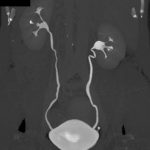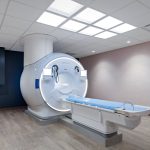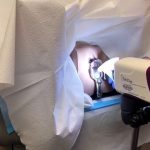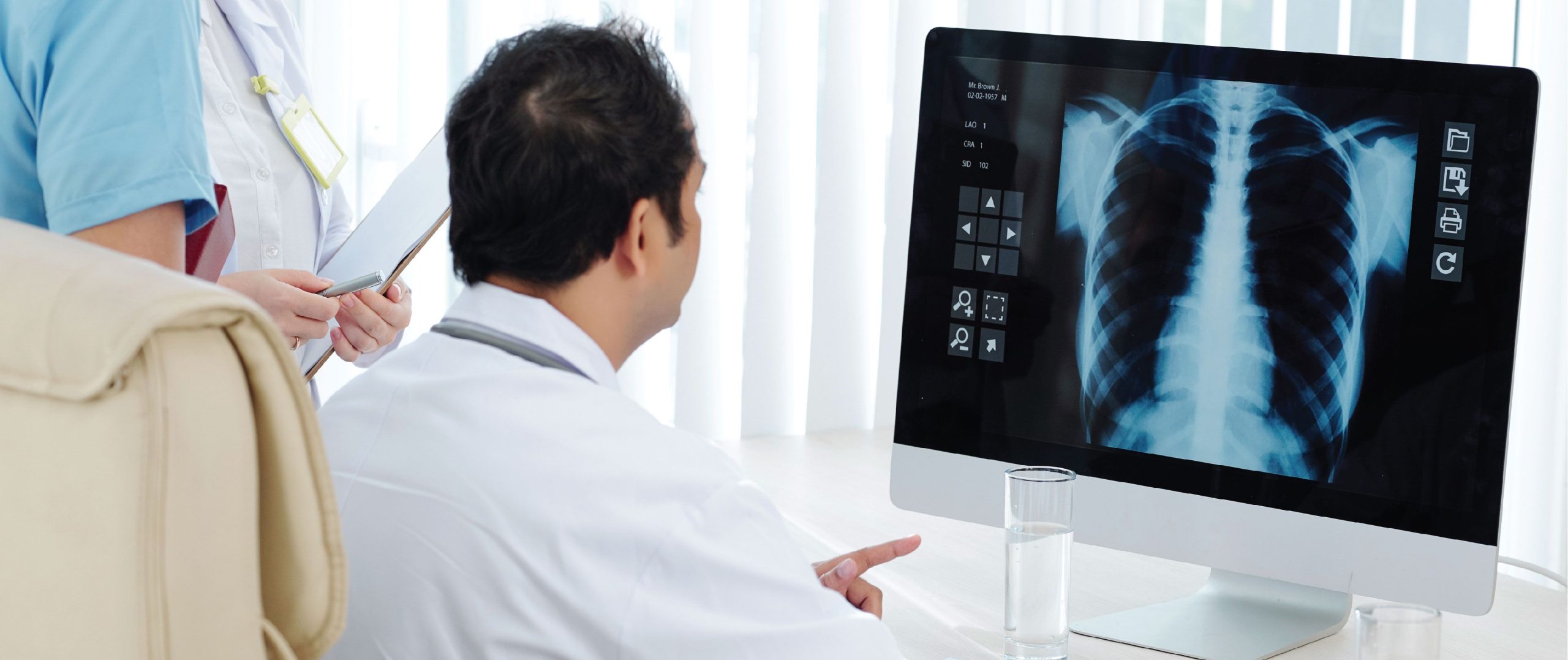
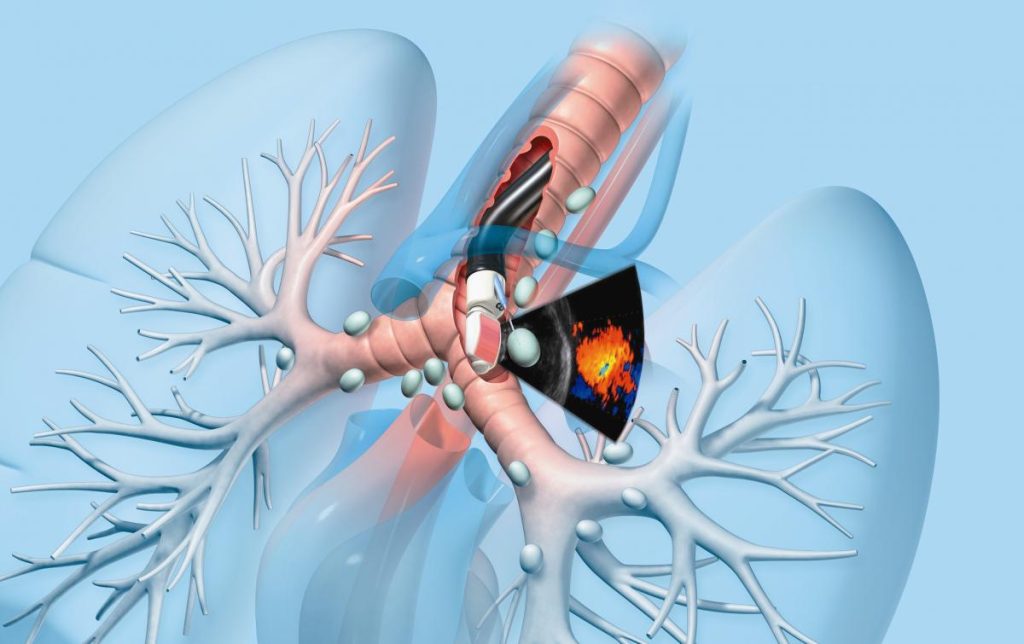
Endobronchial ultrasound is also called Endobronchial Ultrasound-guided Transbronchial Needle Aspiration (EBUS-TBNA). It is a test that can show if:
- an abnormal looking area is cancer
- the size of the cancer
- the cancer has spread into other lung areas or outside the lung
This test uses a narrow flexible tube to look at the inside of the breathing tubes (airways) in your lungs. The tube has an ultrasound probe. It uses high frequency sound waves to create pictures of the lungs and structures outside the airway walls, such as the lymph nodes.
Your doctor can see any areas that look abnormal and take samples (biopsies) to test.
You normally have this test in the endoscopy unit at the hospital. It can take around 40 minutes.
You have the test under a general anaesthetic  or a local anaesthetic
or a local anaesthetic  with sedation
with sedation  .
.
Why do I need an EBUS-TBNA?
You might have this test after an x-ray or CT scan if your doctor has seen:
- an abnormal looking area on your lung
- enlarged lymph nodes
This test can help your doctor diagnose and stage lung cancer and mesothelioma.
What do I need to do to prepare for an EBUS-TBNA?
You’ll be given written instructions on how to prepare for your EBUS-TBNA. For example, they will ask you not to eat and drink for a few hours before the test.
Take your usual medicines as normal unless your doctor tells you otherwise. If you take warfarin or other blood thinners to thin your blood, you need to stop this before your test. Your doctor will tell you when to stop them.
I’m having a general anaesthetic
This means you will be asleep and won’t feel anything during the test. You can’t eat or drink for a few hours beforehand. Check your letter to find out when you need to stop eating and drinking. Contact the department in advance if this is a problem for you, for example, if you have diabetes.
You meet the anaesthetist  before your test. They look after you while you have the anaesthetic and while the chest doctor is carrying out your EBUS-TBNA. The anaesthetist might give you some painkillers to prevent soreness.
before your test. They look after you while you have the anaesthetic and while the chest doctor is carrying out your EBUS-TBNA. The anaesthetist might give you some painkillers to prevent soreness.
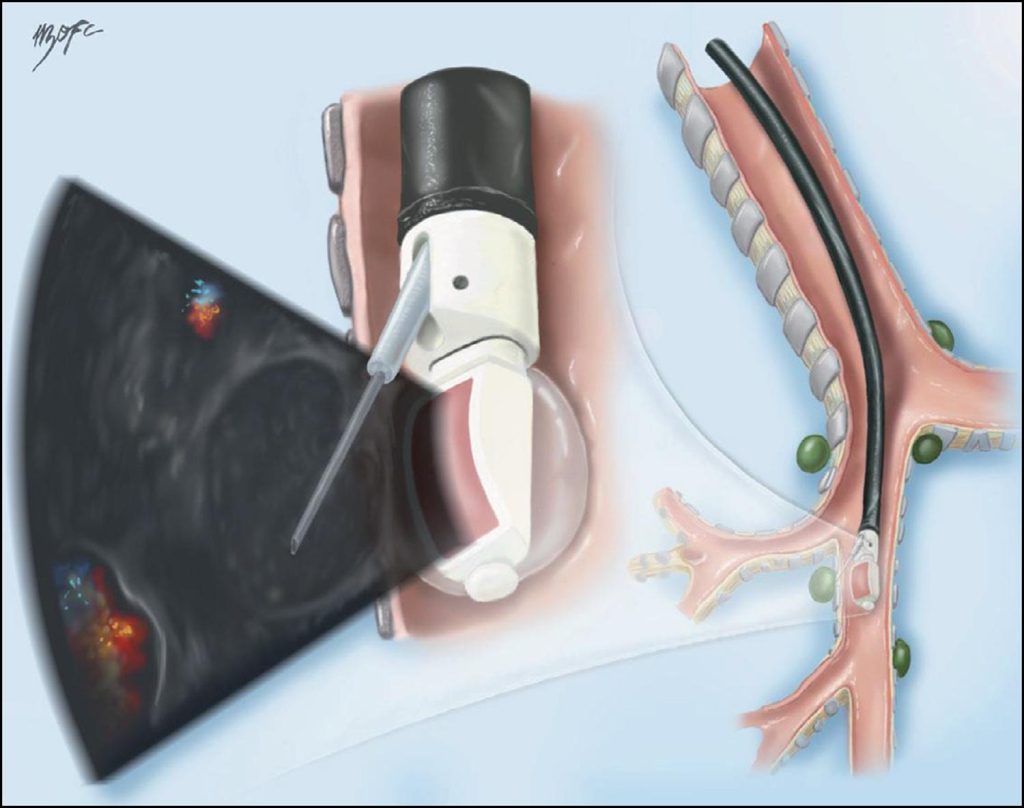
What happens on the day?
Before the test
When you arrive at the outpatient department the nurse takes some measurements. This includes your blood pressure, heart and breathing rate, your oxygen level and weight.
You’ll see your doctor who will explain what’s going to happen and ask you to sign a consent form. This is a good time to ask any questions you may have.
You may need to change into a hospital gown, or you might be able to stay in your own clothes.
If you’re having a local anaesthetic with or without a light sedation
The nurse takes you to the test room. You may have the test sitting upright on the procedure couch or lying down. The nurse will explain what position they want you in.
You might have a sedative. This will help you to relax and can make you feel sleepy, but you will be able to answer questions. You have the sedative through a small tube into your vein (cannula).
The doctor will numb your nose and throat using a local anaesthetic. They will either use a spray or a spray and gel. This can make you cough; your eyes may water and you may have a bitter taste in your mouth.
Once this is working you may feel like you can’t swallow but you can.
The nurse or doctor also places a nose or mouthguard in the area the bronchoscope will travel down.
Attached to one of your fingers is a clip to monitor your heart rate and oxygen levels throughout the test.
If you are having a general anaesthetic
The nurse will take you to the room and you lie on a couch. To get you to sleep the anaesthetist puts a cannula in one of your arms. You then have the anaesthetic drug through the cannula into your bloodstream.
During the test
Your doctor puts the bronchoscope into your mouth or down a nostril to your airways. This is a bit uncomfortable but it doesn’t last long and shouldn’t hurt because you have had the local anaesthetic. You can breathe normally.
Your doctor then looks for anything abnormal and can take tissue samples (biopsies) to test. Or your doctor might take some cells by using a small brush or using a liquid to collect them. They can also take photographs of the inside of your airways.
Your nurse or anaesthetist checks your oxygen levels and heart rate using the clip on your finger.
After the test
Afterwards, you’ll feel sleepy. A nurse will monitor you in the recovery area until you are awake enough to leave.
You won’t be able to eat or drink anything until the local anaesthetic wears off. This is because your throat is too numb to swallow safely at first. This usually passes after about an hour.
The nurse will remove the cannula before you are ready to leave.
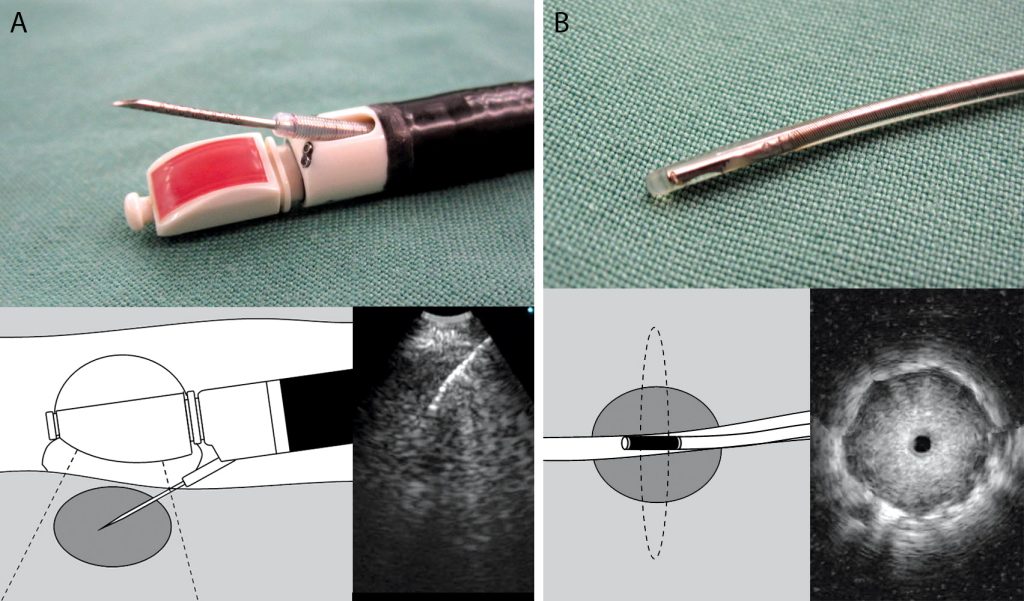
Going home
You can usually go home the same day. If you take blood thinners your doctor or nurse will tell you when to restart them. This is usually the next day. Someone should collect you from the hospital and stay with you overnight if you have had a sedative or anaesthetic.
You shouldn’t drive or drink alcohol for 24 hours after having a sedative or anaesthetic. You also shouldn’t operate heavy machinery or sign any important documents.
You need to take things easy for a day or so. You might have a sore throat for a couple of days.

Possible risks
The possible risks include:
Bleeding
You might see a small amount of blood in your spit after the test. Let your doctor or nurse know if this doesn’t go away.
Chest infection
See your GP straight away if your phlegm (sputum) changes colour, you start feeling more breathless or you feel as though you have a temperature.
Needing extra oxygen
You might need oxygen through a mask for some time after the bronchoscopy. If you normally have oxygen at home you might need to have more than usual for a little while.
A collapsed lung (pneumothorax)
Air or gas can collect in the space around the lung and make it collapse, but this is rare. Contact a doctor if you become short of breath or have chest pain. You have a tube put into the lung to remove the air.
Inflammation or infection of the central part of the chest (mediastinitis)
Inflammation or infection of the central part of the chest (mediastinum) can happen. Symptoms include pain or discomfort in the centre of your chest. Contact your healthcare team if you have this. You will need to be admitted to hospital for treatment with antibiotics into a vein (intravenously).
Getting your results
You should get your results within 1 or 2 weeks. Contact your doctor if you haven’t heard anything after this time.
Waiting for test results or for further tests can be very worrying. You might have contact details for a specialist nurse and you can contact them for information if you need to. It may help to talk to a close friend or relative about how you feel.

